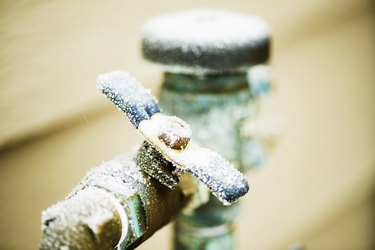Tips to Defend Plumbing System from Cold Weather: Critical Strategies
Tips to Defend Plumbing System from Cold Weather: Critical Strategies
Blog Article
How do you actually feel about How to prepare your home plumbing for winter weather?

Cold weather can ruin your plumbing, particularly by freezing pipelines. Here's just how to stop it from happening and what to do if it does.
Intro
As temperatures decline, the threat of frozen pipelines boosts, possibly causing expensive repairs and water damage. Comprehending how to stop frozen pipes is vital for property owners in chilly environments.
Recognizing Icy Pipelines
What creates pipelines to freeze?
Pipelines ice up when exposed to temperatures listed below 32 ° F (0 ° C) for expanded durations. As water inside the pipelines ices up, it increases, taxing the pipeline wall surfaces and possibly creating them to burst.
Dangers and damages
Frozen pipes can result in supply of water disruptions, building damages, and pricey fixings. Burst pipelines can flood homes and trigger extensive architectural damages.
Indicators of Frozen Water Lines
Identifying icy pipes early can stop them from rupturing.
Exactly how to determine icy pipelines
Seek lowered water flow from taps, unusual smells or noises from pipes, and noticeable frost on subjected pipes.
Prevention Tips
Insulating at risk pipelines
Cover pipes in insulation sleeves or utilize heat tape to protect them from freezing temperature levels. Concentrate on pipes in unheated or external locations of the home.
Heating techniques
Maintain interior rooms properly heated up, especially areas with pipes. Open cupboard doors to permit warm air to distribute around pipes under sinks.
Shielding Outdoor Pipes
Garden tubes and outside taps
Detach and drain pipes yard tubes prior to winter months. Mount frost-proof spigots or cover exterior faucets with insulated caps.
What to Do If Your Pipelines Freeze
Immediate actions to take
If you believe frozen pipelines, maintain faucets open to soothe stress as the ice melts. Use a hairdryer or towels taken in hot water to thaw pipelines slowly.
Long-Term Solutions
Architectural adjustments
Consider rerouting pipelines away from outside walls or unheated areas. Include extra insulation to attics, basements, and crawl spaces.
Upgrading insulation
Purchase top notch insulation for pipes, attic rooms, and wall surfaces. Correct insulation aids keep consistent temperature levels and reduces the risk of frozen pipes.
Final thought
Stopping frozen pipes calls for positive measures and quick responses. By comprehending the reasons, signs, and preventive measures, homeowners can shield their pipes throughout cold weather.
5 Ways to Prevent Frozen Pipes
Drain Outdoor Faucets and Disconnect Hoses
First, close the shut-off valve that controls the flow of water in the pipe to your outdoor faucet. Then, head outside to disconnect and drain your hose and open the outdoor faucet to allow the water to completely drain out of the line. Turn off the faucet when done. Finally, head back to the shut-off valve and drain the remaining water inside the pipe into a bucket or container. Additionally, if you have a home irrigation system, you should consider hiring an expert to clear the system of water each year.
Insulate Pipes
One of the best and most cost-effective methods for preventing frozen water pipes is to wrap your pipes with insulation. This is especially important for areas in your home that aren’t exposed to heat, such as an attic. We suggest using foam sleeves, which can typically be found at your local hardware store.
Keep Heat Running at 65
Your pipes are located inside your walls, and the temperature there is much colder than the rest of the house. To prevent your pipes from freezing, The Insurance Information Institute suggests that you keep your home heated to at least 65 degrees, even when traveling. You may want to invest in smart devices that can keep an eye on the temperature in your home while you’re away.
Leave Water Dripping
Moving water — even a small trickle — can prevent ice from forming inside your pipes. When freezing temps are imminent, start a drip of water from all faucets that serve exposed pipes. Leaving a few faucets running will also help relieve pressure inside the pipes and help prevent a rupture if the water inside freezes.
Open Cupboard Doors
Warm your kitchen and bathroom pipes by opening cupboards and vanities. You should also leave your interior doors ajar to help warm air circulate evenly throughout your home.

As a reader about Preventing and dealing with frozen pipes, I think sharing that segment was worthwhile. Those who enjoyed our blog entry kindly make sure you remember to pass it around. Thanks so much for your time spent reading it.
Additional Resources Report this page